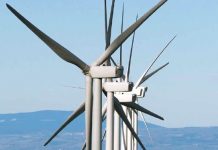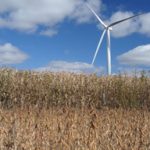Welcome to the June issue of Wind Systems magazine! This month we’re focusing on the maintenance side of O&M as well as condition monitoring, two key aspects of the wind energy industry. It’s crucial for a wind turbine to reach the optimal level of its performance to maximize gains and cut operating costs. Wind turbine O&M services are important as they reduce the number of wind turbine breakdowns and losses caused due to downtime.
According to “The Wind Energy Operations & Maintenance Report 2016” by Wind Energy Update, the industry has advanced over the last 20 years in terms of turbine performance. This is attributed to a number of factors, including advanced controls for load mitigations, full power converters for improved grid code compliance, and better sensors for more accurate control and monitoring, among others. This strong growth in wind power capacity in recent years has led to a dramatic increase in the number of turbines approaching the end of the OEM’s warranty period. Additionally, post-warranty service costs have fallen on increased competition and technological advances.
OEMs typically provide three-quarters of post-warranty service contracts. But in the United States where the wind industry market is extremely price competitive, a growing number of independent service providers (ISPs) are competing for a piece of that pie. Some operators are even opting to use in-house O&M services over the OEMs and ISPs.
A recent market research report published by Transparency Market Research estimated the total value of the global wind turbine operations and maintenance market to be $9.3 billion in 2014. According to the report, the wind energy market will expand at a favorable 8.8-percent compound annual growth rate (CAGR) from 2015 through 2023, rising to a total value of $20.6 billion.
For this month’s company profile, we spoke with Michael Feldstein at Surface Technology Inc. to learn more about how his company is meeting the demands of the wind energy market with its composite electroless nickel (CEN) plating technology wherein the wind turbine components are made more durable and can withstand the extreme climates in which they operate. We also spoke with Ruben Guerrero from Lighthosue Global Energy for this month’s conversation. There, you’ll learn more about how the company entered the wind energy market and what the industry can expect from Lighthouse Global moving forward.
You’ll also find two technical articles in this issue — one on the growth in the use of drones to inspect wind turbines by SkySpecs co-founder and CTO Tom Brady and the other by Patrik Ölund, the head of research and development at Ovako AB, that explores the advantages of using a stronger, cleaner class of steel in wind energy applications.
As always, thanks for reading!


































